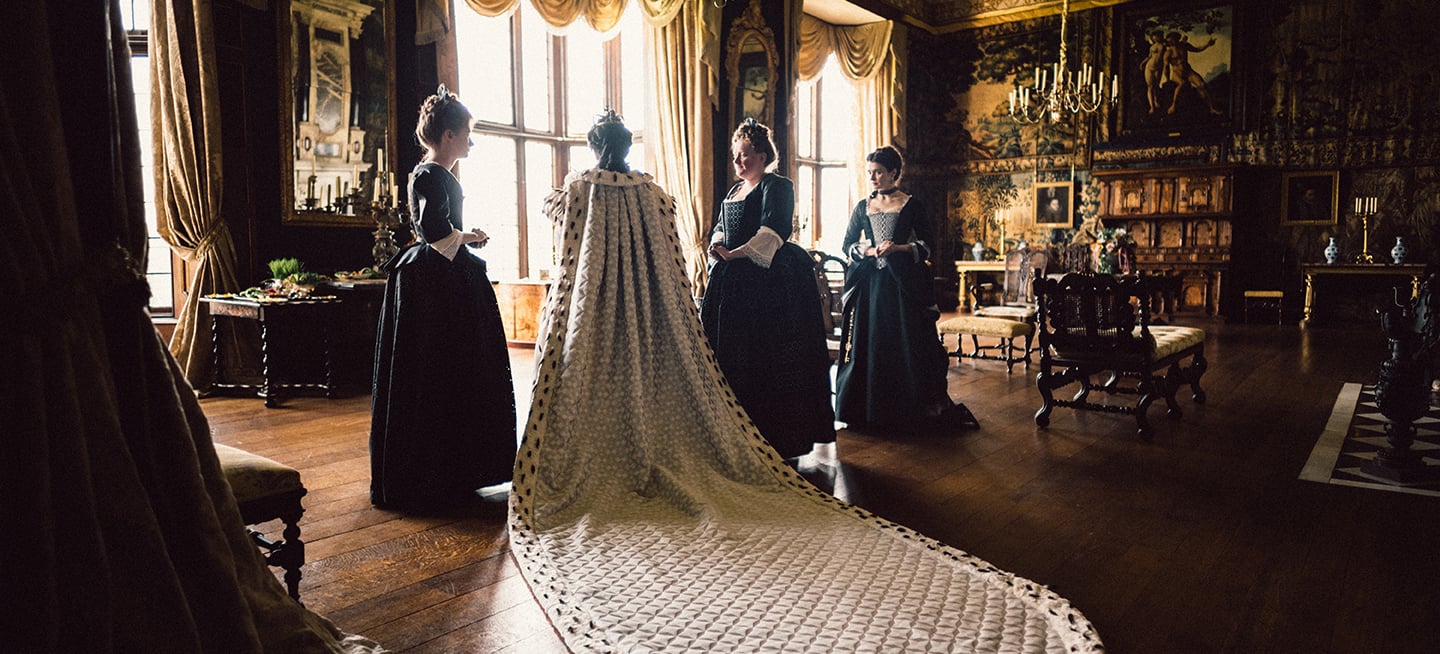
Royal Trappings: The Favourite
Robbie Ryan, BSC, ISC crafts an unconventional portrait of a troubled monarch and her closest courtiers in director Yorgos Lanthimos’ period feature.
Robbie Ryan, BSC, ISC crafts an unconventional portrait of a troubled monarch and her closest courtiers in director Yorgos Lanthimos’ period feature.
Unit photography by Atsushi Nishijima. Additional photos by Yorgos Lanthimos. All images courtesy of 20th Century Fox Film Corp.
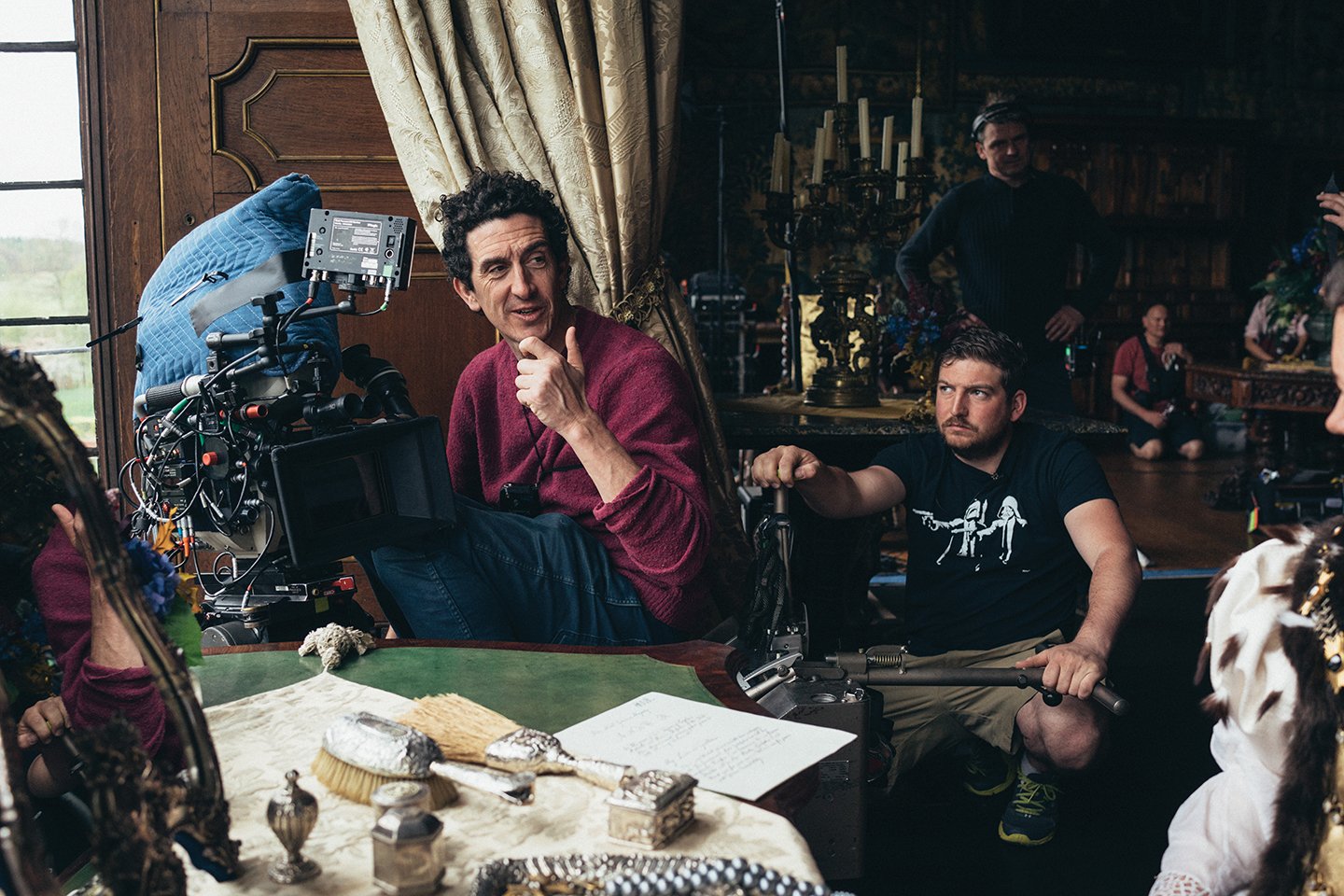
In early 18th-century England, two women — Lady Sarah Churchill and servant Abigail Masham — compete for the friendship and loyalty of a physically and mentally frail Queen Anne, who is easily manipulated yet wields immense power. Though the premise might sound ripe for a “conventional” period piece, there’s nothing routine about the feature The Favourite, which breathes new life into the traditions of historical drama with a bold visual style characterized by extreme wide-angle lenses, dynamic movement and unusual camera placement.
Directed by Yorgos Lanthimos and shot by Robbie Ryan, BSC, ISC, The Favourite stars Rachel Weisz as Lady Sarah, Emma Stone as Abigail, and Olivia Colman as the queen. Lanthimos says that between developing the script — which was written by Deborah Davis and Tony McNamara — and finding the right cast, The Favourite took eight or nine years altogether to make it to the screen. “During that period, I met Robby a few times,” the director says. “I always liked his work, and he was always someone I had in mind [to collaborate with], but because of schedules and timing, it never worked out [until] this one.”
“We met for coffee and a chat a few years before The Favourite actually happened,” Ryan remembers. “We were going to make a short film together. That didn’t work out, but then the script for The Favourite was sent to me, and I was excited to go on a journey with Yorgos on that. It ended up happening a couple years later; he had done The Killing of a Sacred Deer in between.”
“He’s very keen on creating a language where
you don’t really see the normal angles that
you would expect.”
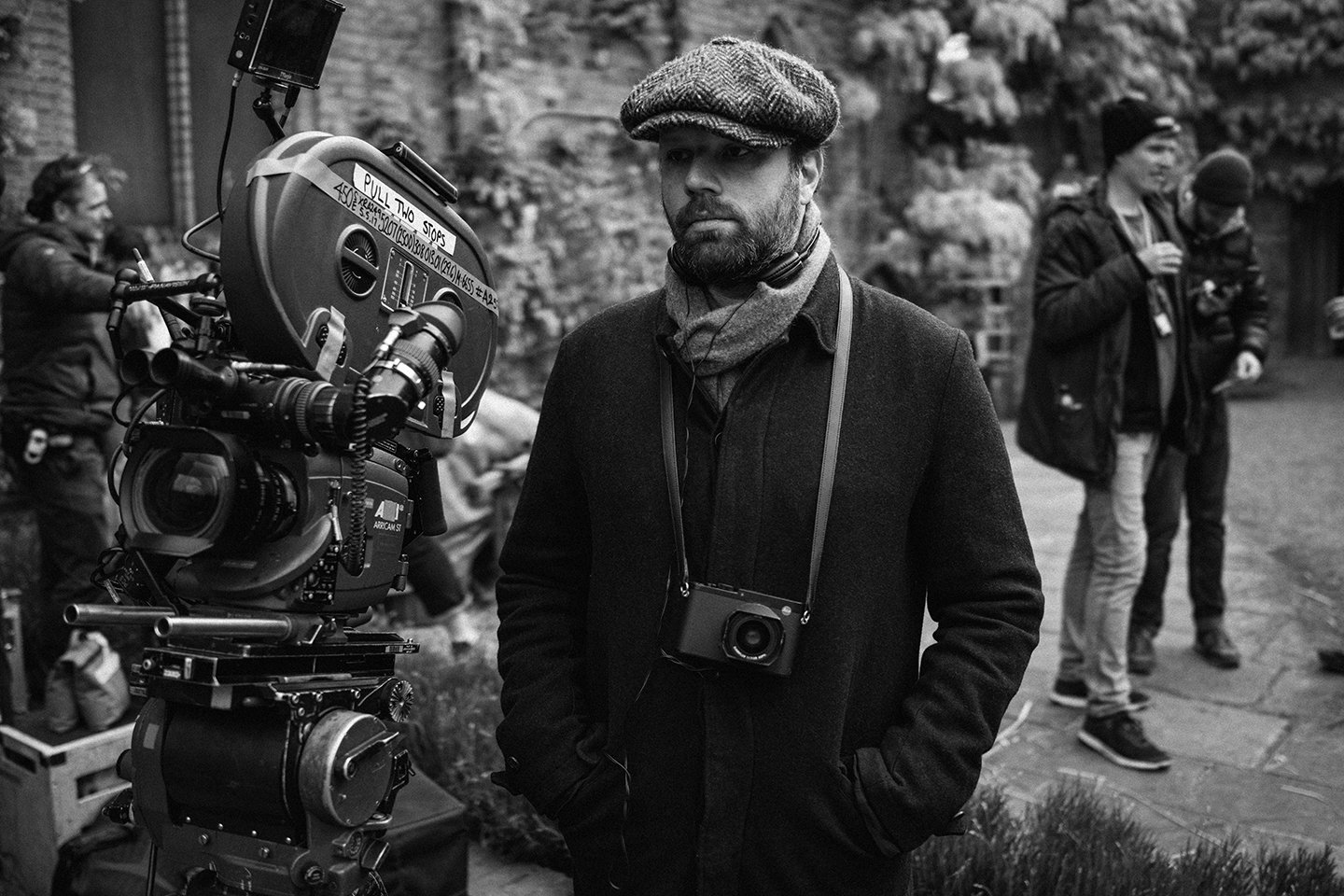
Once preproduction was officially underway on The Favourite, Ryan quickly learned how to mesh with Lanthimos’ distinctive style. “I come with a lot of baggage,” the director admits, “meaning that I have things that I like that I’ve done in the past but also things that I want to change considerably.”
For his part, the cinematographer found that it was sometimes easiest to determine what Lanthimos didn’t like. “He doesn’t like conventional coverage,” Ryan notes. “I don’t think he would ever do a shot and then a matching reverse shot — it’s just something he’s not a fan of. He’s very keen on creating a language where you don’t really see the normal angles that you would expect.”
Lanthimos concurs with that assessment. “I don’t react well to angles or lenses that feel ‘middle of the road,’” he offers. “In this film, I wanted to create a world which felt quite absurd and distorted.”
“Basically, we wanted to be inspired by people who had made bold and interesting choices, whether or not they were actually similar films.”
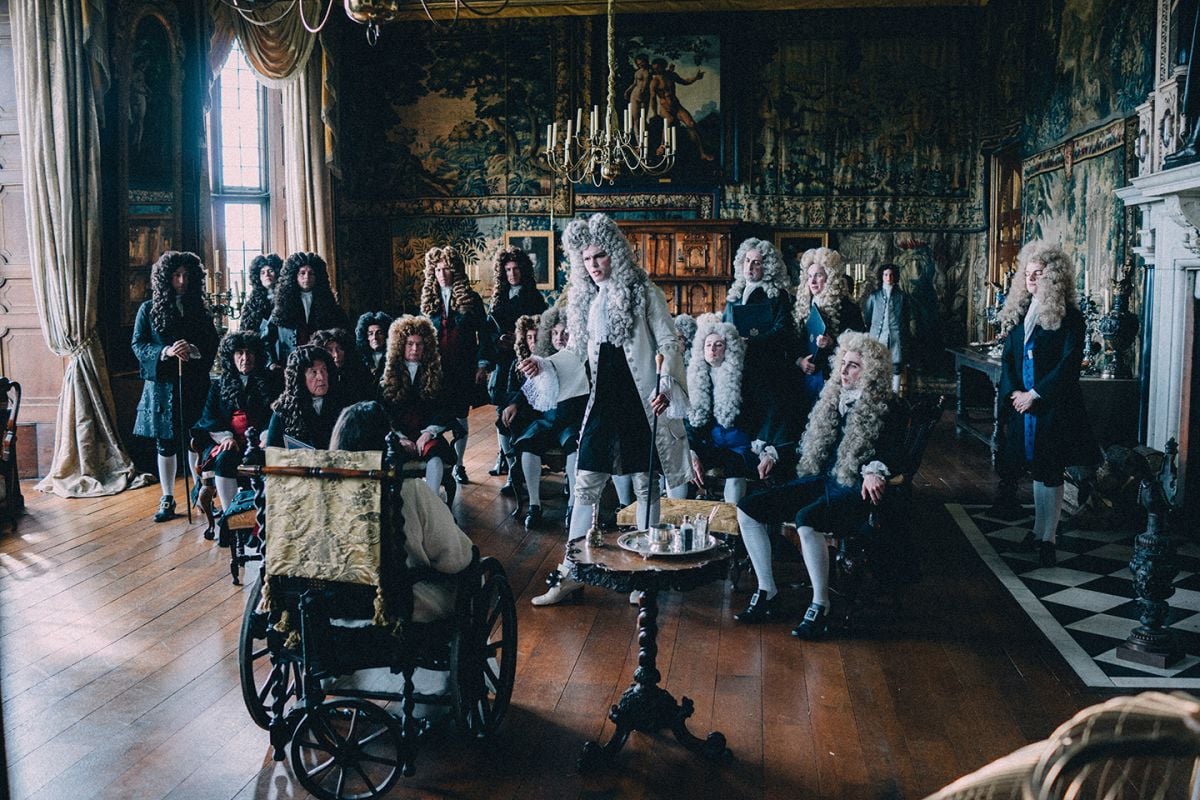
In terms of his visual influences, the director says he wanted to focus on movies that wouldn’t ordinarily be thought of when making a period piece. “Robbie and I watched [Andrzej] Zulawski’s Possession, and [Ingmar Bergman’s] Cries & Whispers, and Juraj Herz’s Cremator,” he explains. “Basically, we wanted to be inspired by people who had made bold and interesting choices, whether or not they were actually similar films. We talked about how to use framing that can make you focus more on one person than another — in spite of using wide-angle lenses and including multiple people in the frame — and how to do that with [camera] movement as well.”
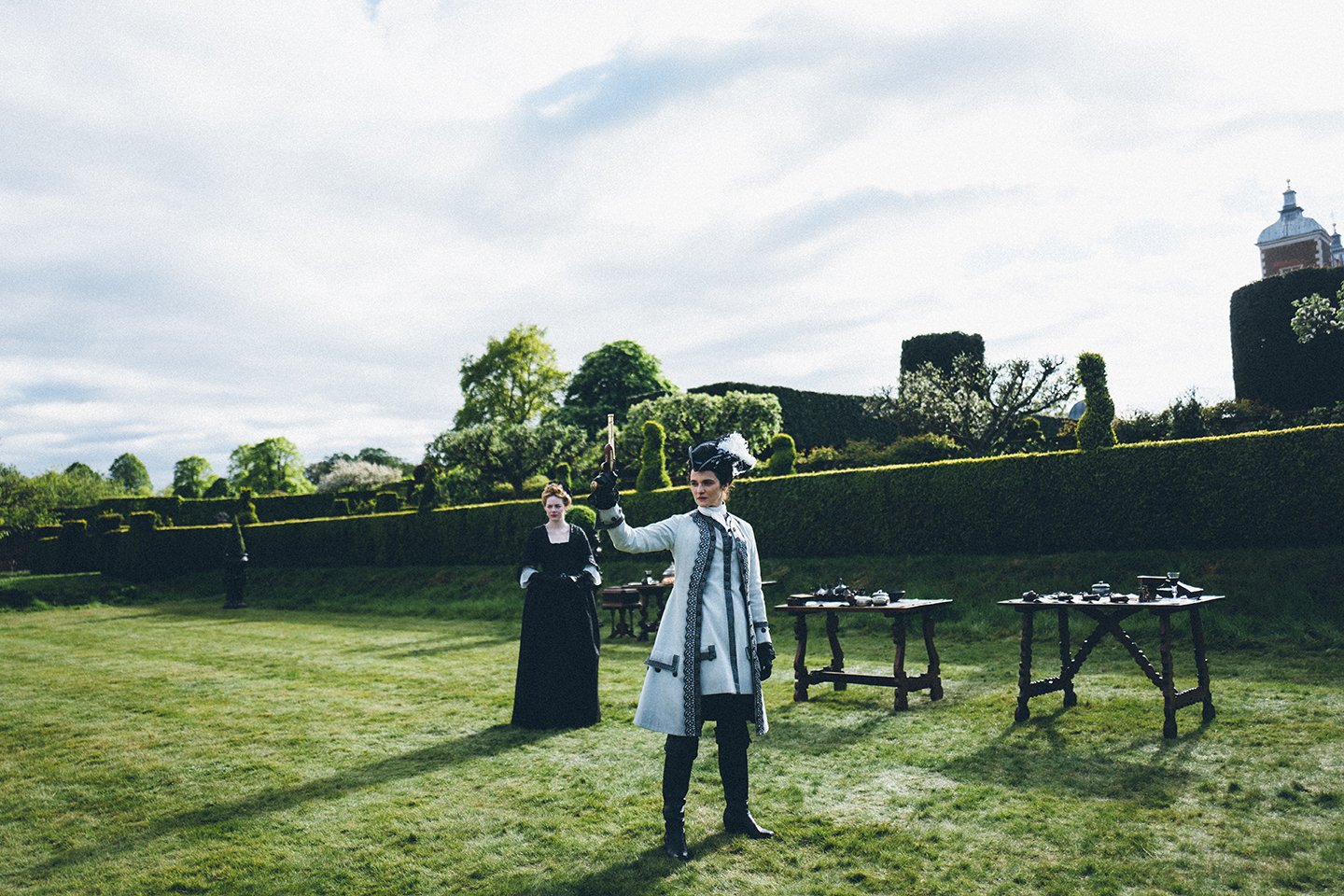
To that end, many scenes in The Favourite were shot from either extremely high or extremely low angles, with the camera’s view wide enough to show all the action occurring in a room at once. It was great because you just had a clear room,” Ryan recalls. “The forest of flags and things that usually build up around the camera tend to suffocate a location, so it was refreshing to have a room that was very, very minimal, with just the actors. The only thing I needed to try and get right every time was the panning, which was challenging because it was all about precise timing. If I didn’t get it right, then it was all on me to do it again. That’s a challenge I quite enjoyed.”
Most of the film was shot in Hatfield House, a Jacobean estate in Hertfordshire, England. “It’s a location that’s been used an awful lot [for other movies] over the last few years because it’s very close to London,” the cinematographer says. “But because we were shooting with such wide lenses and seeing the ceilings, we were able to show it in a way that it hadn’t been photographed before. I don’t think those other films used the rooms quite so panoramically. Interestingly, I think seeing the whole vista of the location makes the film quite claustrophobic because there’s nowhere to hide. As you’re watching it, you start to feel like a prisoner, just like the characters.”
“I was shooting beautiful locations, beautiful costumes and beautiful people — so it was hard not to make a good picture from it.”
Lanthimos adds that the location also helped determine the film’s palette. “What we tried to do was strip out a lot of the things that were there and limit the colors and clutter in those rooms,” he explains. “Those rooms have been there for years and have become very busy with furniture, paintings and other various objects. Once we stripped those down quite a bit, that left us with the main color palette and texture of the walls, the floors and the ceilings. The queen’s room, for example, had a very distinct kind of green and golden hue because of the tapestries on the walls, which were the only things we kept. And then we brought our furniture, which also had golden-hued drapes and bed covers and things like that.”
Working alongside production designer Fiona Crombie and costume designer Sandy Powell, Lanthimos and Ryan strove to limit the palette as much as possible. “It was really about what was there in front of the camera, and the starting point was always the actual location, because each room in the palace was very colorful,” Ryan says. “From my point of view, I was shooting beautiful locations, beautiful costumes and beautiful people — so it was hard not to make a good picture from it.”
That said, the location did have its limitations. “It’s a privately owned building, so there were huge restrictions that Fiona was up against in terms of what you’re allowed to move and change,” the cinematographer shares. “To even move a table was a big deal. But [the location] worked beautifully because everything is connected, but you don’t really know the geography of the palace. It’s a little bit like an Escher painting, where you just don’t know where anything leads.”

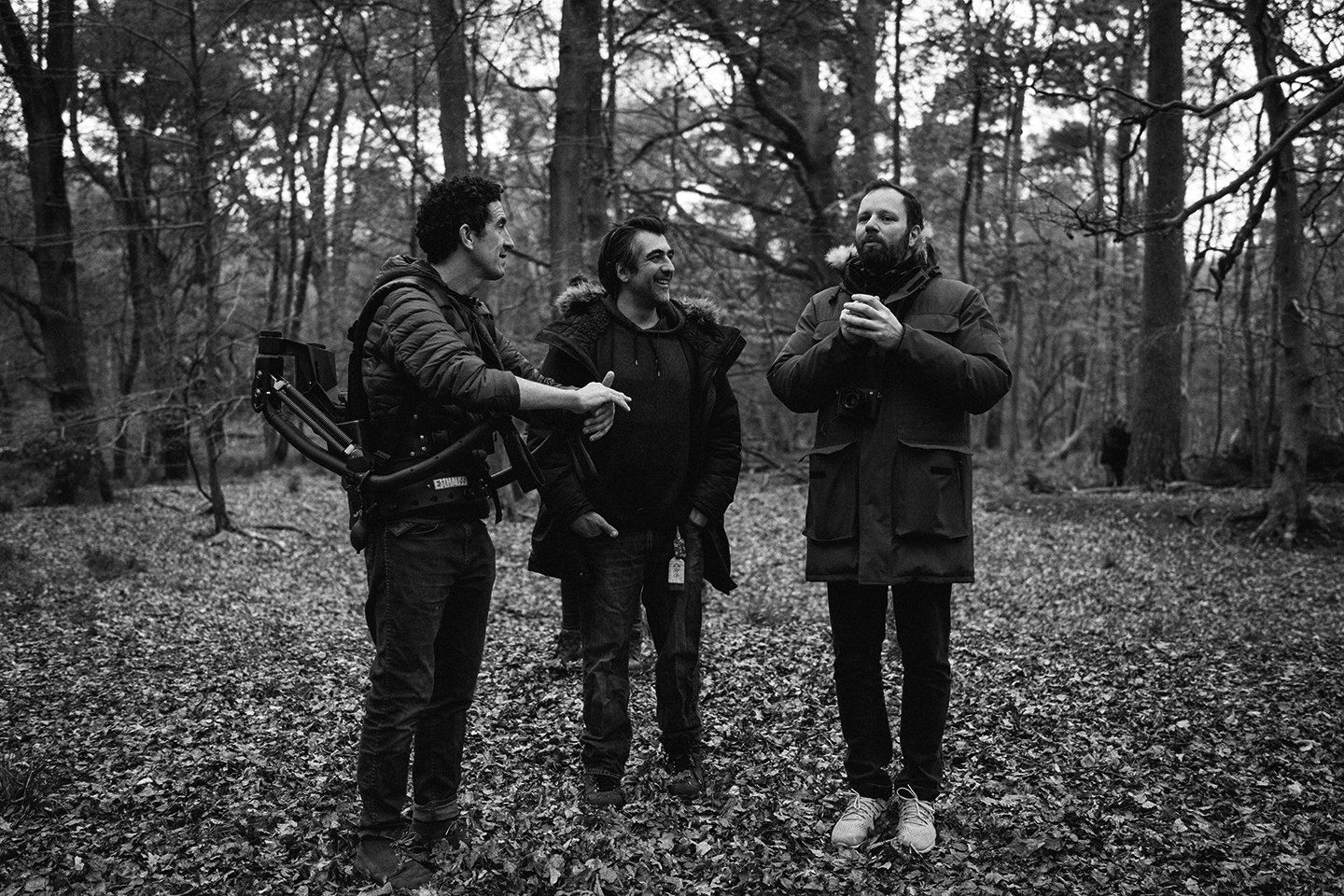
“Usually you have natural light with a bit of balance. On this occasion, it was frowned upon to have that balance.”
The use of candlelight also affected the overall palette. “It brings in a whole new color,” Ryan says. “It’s interesting to see what the place looks like at nighttime, what it looks like during the day. I have to say, when you’re doing a period drama like this, it really is a fun tableau to work from. You’ve always got a lot of richness to tap into.”
One of Lanthimos’ mandates early on was to shoot the film almost entirely with natural light. “I don’t like artificial lighting unless it’s absolutely necessary to get an exposure,” the director states. “I don’t like to work in an environment where I’m surrounded by tripods and lights and flags and diffusion, and then when I need to move on to a different shot, I need to change everything around. My ideal set is just a camera, a microphone and the actors.”
Although Ryan had embraced natural light for some of his previous projects, he took the approach to a whole new level for The Favourite. “Usually you have natural light with a bit of balance,” he explains. “On this occasion, it was frowned upon to have that balance. It was amazing to see how the film started out with very bright windows backlighting an actress, and then seeing that the faces were still exposed — and they were, in effect, even more beautiful. I learned a lot about the value of not using anything.”
Ryan shot The Favourite on 35mm motion-picture negative, primarily working with Kodak Vision3 500T 5219, and occasionally with 200T 5213 and 50D 5203. “We pushed the stock a bit and we pulled the stock a bit,” he says. “Because the lenses we were using were so wide, we couldn’t use filters on the front of them. We used the 50 ASA stock for the horse-riding scene with the queen and Lady Sarah, and we pulled it two stops — I’ve never pulled stock that much. The stock was very contrasty, though; when you pull it, you lose the contrast and it looks quite lovely.” For interior and exterior night scenes, Ryan would push the 5219 one or two stops.
Lanthimos adds that shooting on film helped with the natural-light approach: “I think film handles that kind of difficulty much better because it has more depth. Even if something is underexposed, [film] just handles it better, and can give it more texture and separation and make it more alive. If you’re using fast lenses, I don’t think there are many circumstances where you can’t get a great image.”


Working with Charlie Todman and Hugh Whittaker at Panavision London, Ryan elected to shoot with Panaflex Millennium XL2, Arricam ST and Arricam LT camera bodies. The filmmakers preferred shooting with a single camera, which Ryan would operate, but “when the schedule was against us,” the cinematographer offers, two cameras would roll simultaneously, with Lanthimos operating the second camera.
While making The Killing of a Sacred Deer — which was photographed by Thimios Bakatakis, GSC (AC March ’18) — Lanthimos fell in love with the 10mm lens, and on The Favourite he wanted to take the wide-angle aesthetic even further. Accordingly, focus puller Andrew O’Reilly went to Panavision, asked around, and, as Ryan explains, “It was the classic story of dusting off a lens that hadn’t been used in a very long time. It was a 6mm [SF6 Fisheye Lens (T2.8)], and the actual manufacture of it is so beautiful — it’s a work of art just to look at it. When we put it on and looked at the way it shot things, it was a no-brainer.”
Indeed, that 6mm became the production’s signature lens. “Once that lens came out, everybody was in the shot, so they had to go into another room,” Ryan recalls, laughing at the recollection. “My head would be in it as well!”
In addition to the 6mm, Ryan also carried a set of Primo spherical primes ranging from 10mm to 100mm. “I use [the Primos] a lot and love the quality they have with celluloid,” the cinematographer shares.
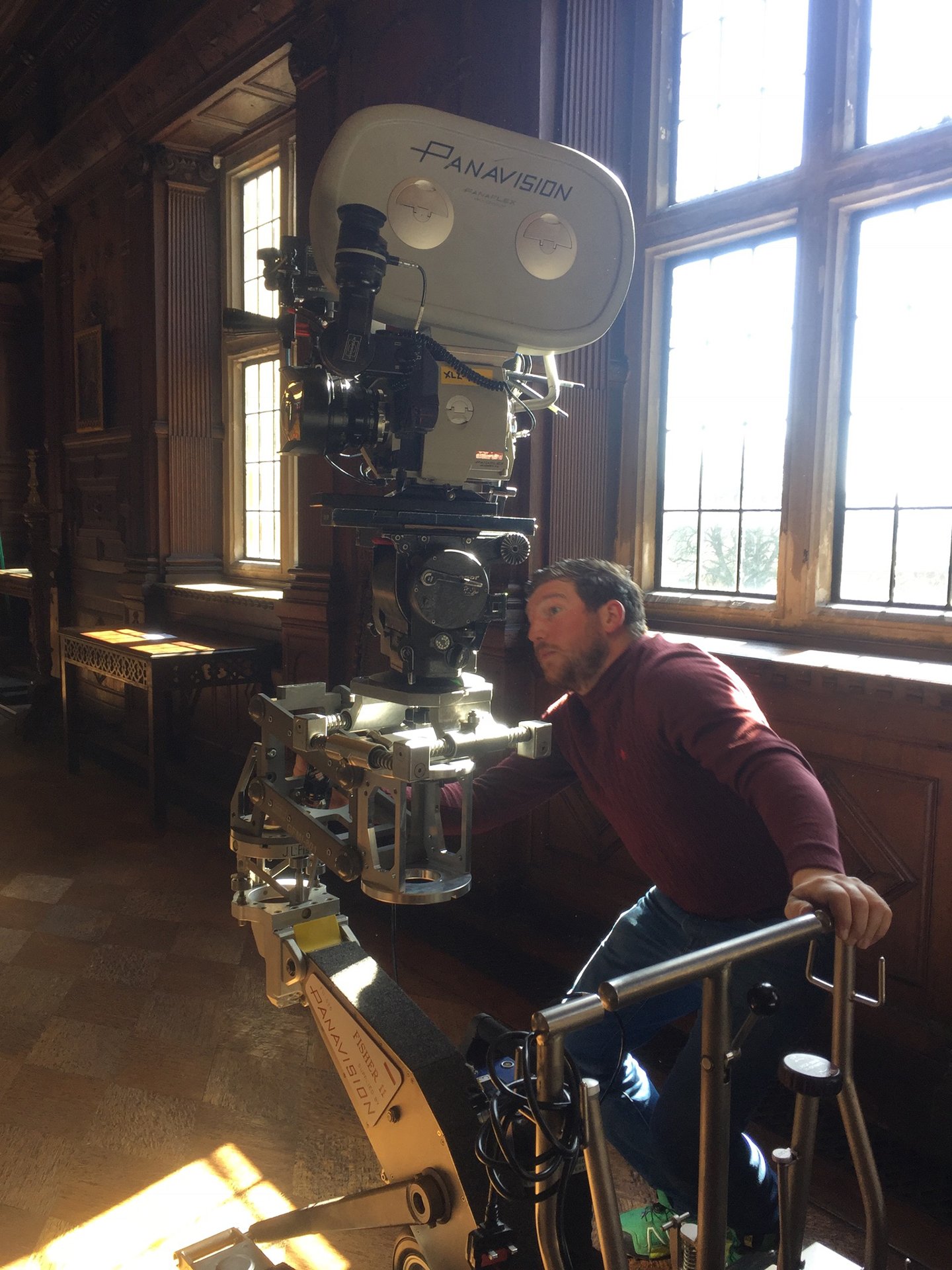
Lanthimos’ desire for a mobile camera only added to the challenge, but Ryan credits key grip Andy Woodcock — who also served as A-camera dolly grip — with helping to make it all work. “He really rose to the challenge of getting the camera moving in every possible way,” the cinematographer says. “Andy was using the Fisher 10 dolly in various ways and guises, on track and on dance floor, with a Libra head or a [Grip Factory Munich shock-absorber arm] and a Chapman Vibration Isolator attached. His timing was brilliant. I really can’t say enough good things about him. He’s amazing.”

Paul Edwards operated a Steadicam for some interior and exterior shots, but for many of the scenes requiring a moving camera, Ryan paired the Millennium with “Rizwan Wadan’s Double Helix rig with exoskeleton suit,” says the cinematographer, who wore the rig himself. He describes it as “kind of like a Steadicam vest, but there are two articulated exoskeleton arms coming out the back of the vest with high-tension springs in them. They come down and hold the gimbal rig. I don’t know that we ever got [the rig] perfected, but the shots are in the film, and they sit in with the language very well.”

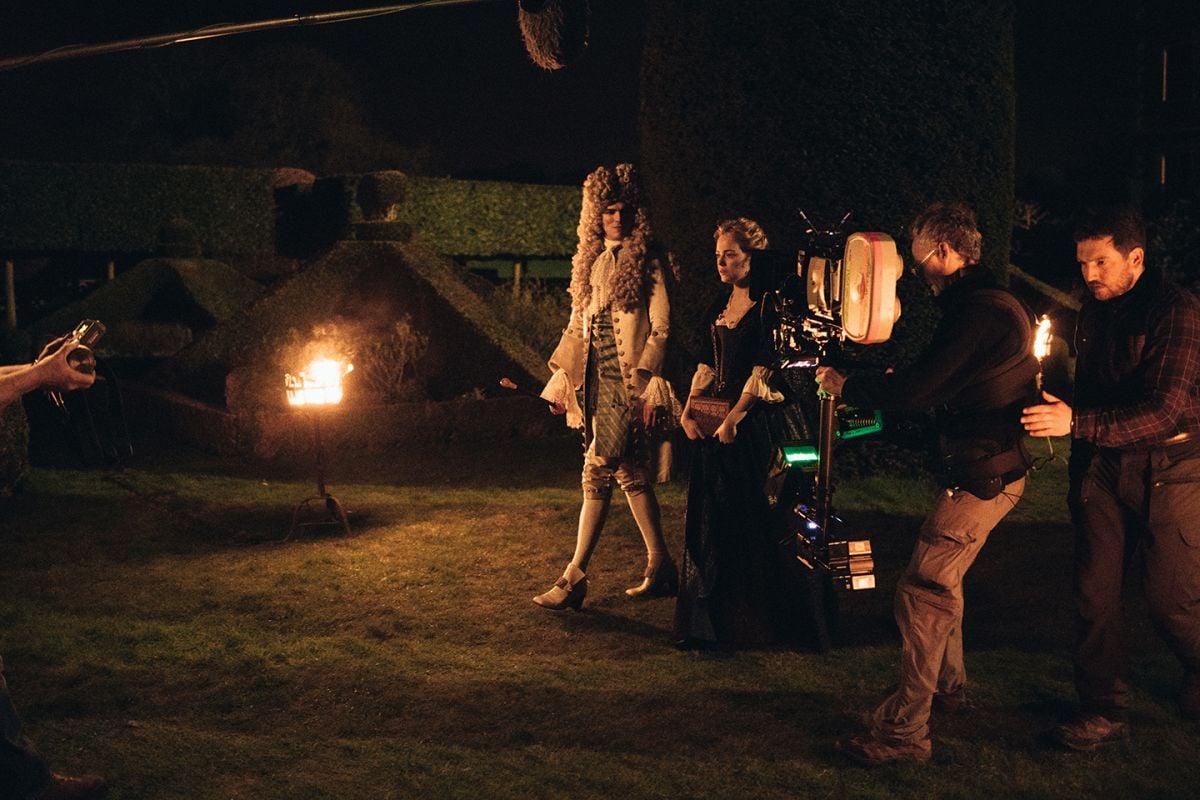
The production’s negative was processed at Kodak Film Lab London, then scanned at 4K by Company 3. Ryan was on another project when it came time to grade The Favourite, but he could rest easy knowing that his frequent collaborator Rob Pizzey, senior colorist at Goldcrest in London, would be at the controls. “When we were prepping The Favourite, Yorgos was in post on Killing of a Sacred Deer and needed a grader,” Ryan recalls. “He asked about Rob; he said, ‘Is he any good?’ And I said, ‘Yeah, I really like Rob.’ So Rob graded Sacred Deer, and Yorgos put his trust in him, and when I found out he would be doing The Favourite, I knew I was in safe hands because he knows my work well.”
According to Lanthimos, the nature of the production meant there wasn’t much manipulation during the grade. “We really went with what was there on the negative,” he explains, “which had a lot of character anyway, because there were many different lighting conditions. Some days were sunny, so the color would be warm and golden; other days were overcast and gloomy, so it would be darker and cooler. We just introduced some contrast to make it look healthy and crisp and sharp, the way film used to look when we were making prints.”
Ryan was thrilled with the results when he was able to see the finished film. “Yorgos was so on top of it, and the nature of shooting on film and on location meant that there wasn’t a massive amount to do [in the final grade],” the cinematographer affirms. “Yorgos doesn’t really like pushing the grade too far, anyway. I think he’s very fond of film the way it is, pretty much out of the box.”
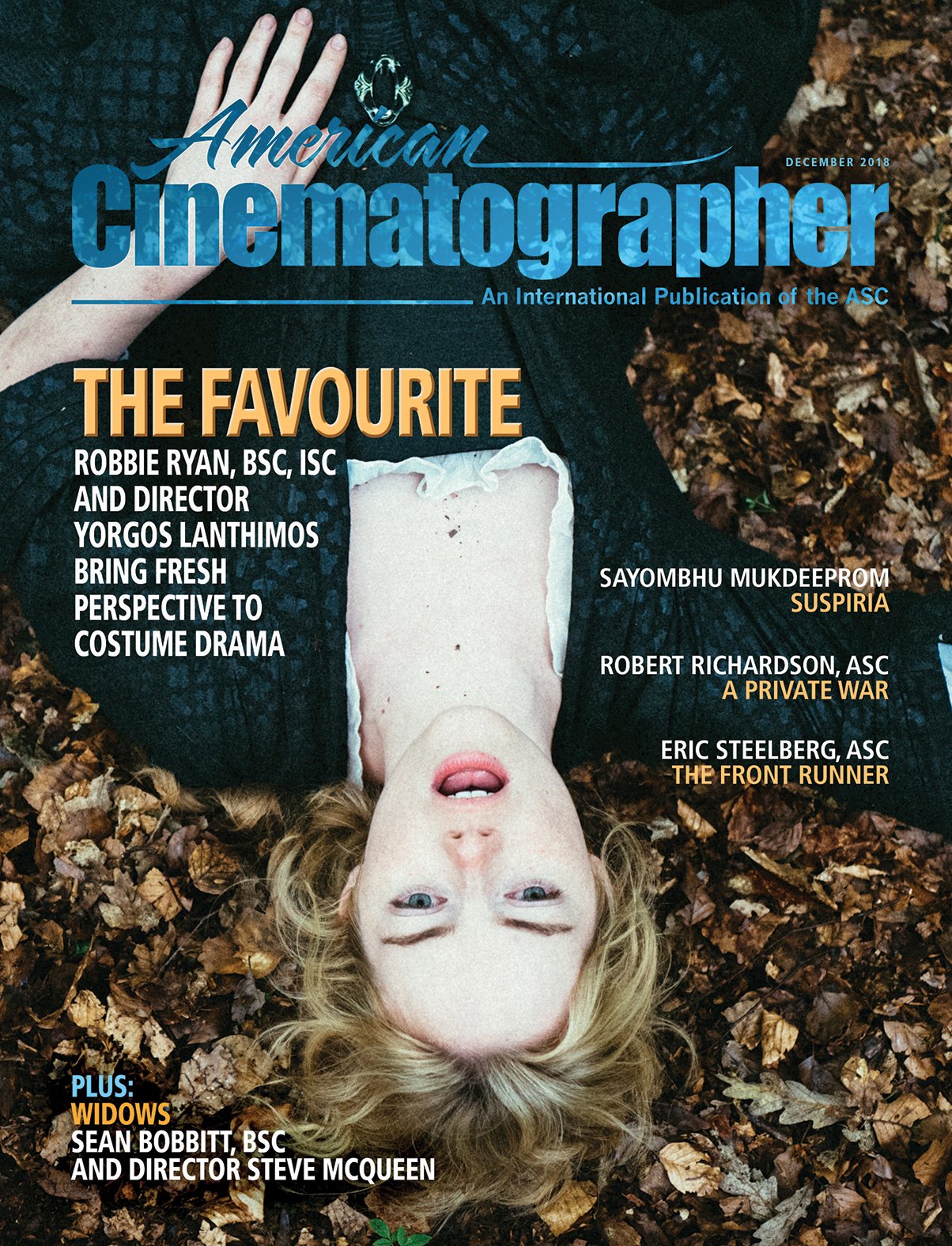
In addition to Lanthimos and Pizzey, Ryan credits the work of editor Yorgos Mavropsaridis with making the most of his cinematography. “The way they’ve constructed [the movie] in the edit, it really sharpens the camera movement, to a point that you’re aware of it but it serves the story as well. The pacing of it is very important, and they did a great job there.” Ryan is also appreciative of the contributions of another cinematographer, Stephen Murphy. “He replaced me for a week when I had a family bereavement,” Ryan explains. “He did an amazing job stepping in at short notice. I couldn’t have done it without his help.”
Ryan has earned an ASC Award nomination for his outstanding camerawork.





